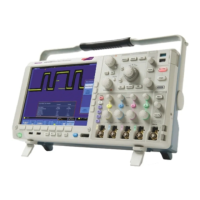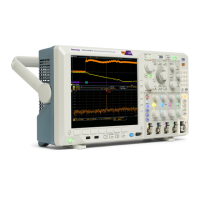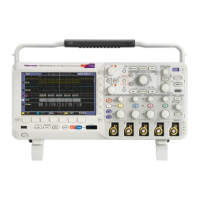Performance Verification
Check Random Noise,
Sample Acq uisition Mode
This test check
s random noise. You do not need to connect any test equipment to
the oscilloscope for this test.
1. Disconnect everything from the oscilloscope inputs.
2. Place the BNC dust cap on the channel to be tested.
3. Push the front-panel Default Setup button.
4. Set Gating to Off as follows:
a. Push the front-panel Wave Inspector Measure button.
b. Push the bottom-bezel More buttontoselectGating.
c. Push the side-bezel Off (Full Record) button.
5. Select the RMS measurement as follows:
a. Push the bottom-bezel Add Measurement button.
b. Use the Multipurpose b knob to select the RMS measurement.
c. Push the side-bezel OK Add Measurement button.
6. Reset statistics as follows:
a. Push the bottom-bezel More buttontoselectStatisti
cs.
b. Push the side-be zel Reset Statistics button.
7. Read and make a note of the RMS Mean value. This is the Sampled Mean
Valu e (SMV).
8. Set the Acquisition mode to Av erage as follows:
a. Push the front-panel Acquire button.
b. Push the bottom-bezel Mode button to display the Acquisition Mode
menu (if it is not already selected).
c. Push the side-bezel Average button.
d. Ensure that the number of averages is set to 16.
9. Reset statistics as follows:
a. Push the front-panel Wave Inspector Measure button.
b. Push the bottom-bezel More button to select Statistics (if it is not already
selected).
c. Push the side-be zel Reset Statistics button.
10. Read and make a note of the RMS Mean value. This is the Averaged Mean
Valu e (AMV).
11.
Calculate the RMS noise using the formula: RMS noise = sqrt(SMV
2
–
AMV
2
). Enter the calculated RMS noise in the test record.
MSO4000B and DPO4000B Series Specifications and Performance Verification 69

